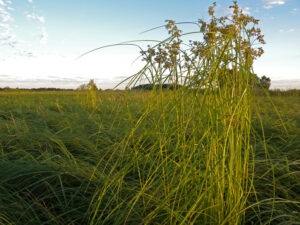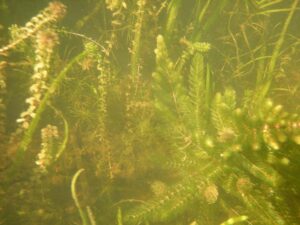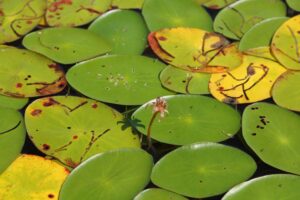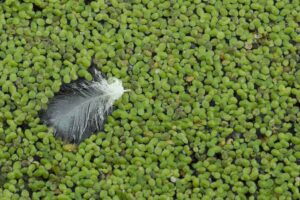What is the difference between emergent, submergent, and other aquatic vegetation?
Emergent Plants:
emerge or have a large portion of their shoots, leaves, or flowering structures out of the water. These include the familiar cattails, bulrushes, wild rice, sedges, bur-reed, and many others. Emergent vegetation can refer to any wetland plant that is above the water. However, for the purposes of this website, I will categorize a plant as emergent only if is frequently aquatic in its habit.

Submergent Plants:
plants that have most of their structures below water. Common examples of these would be coontail, milfoils, and many pondweeds.

Floating-leaf Plants:
have floating leaves. They include the water-lilies, some pondweeds, and American lotus, although the latter often protrude from the water.

Free-floating Plants:
these non-rooted plants include duckweeds, common bladderwort, and often coontail. Coontail is sometimes rooted, but it is dislodged easily by wave action and will continue growing in a floating mass or tangled in with other plants.

Mixed Type:
Some plants have a mixture of different stages of growth. As mentioned above, American Lotus can be a floating-leaf plant or the leaf can emerge from the water on its stems. Some pondweeds have both underwater (submergent) leaves and floating leaves. Coontail, which is one of our most common aquatic plants, is often not rooted and drifts around, getting caught in other vegetation. These differences can be somewhat confusing, and most often, these species with “in between” growth patterns are labeled one or the other.
Note: Most often freshwater aquatic plants are referred to as weeds or even seaweed. This is unfortunate as weed is a very negative term. Aquatic plants are essential to lake health. In science, we often call aquatic plants, aquatic macrophytes to include some of the macroalgae like chara and nittella.

